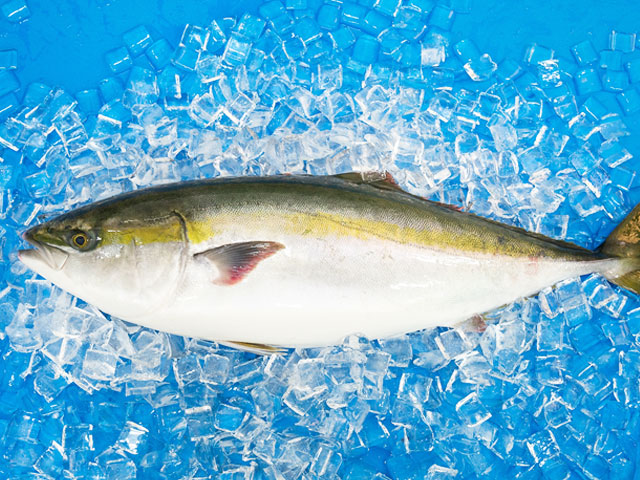
What’s BURI (Japanese Amberjack) ?
Buri (or Japanese Amberjack) is the endemic fish species in the North Pacific, mainly inhabiting the waters around Japan, and is considered to symbolize Japan. Kindai University’s Fisheries Lab introduced fish preserve culture technology (farming fishes with caged nets) into fish culture where it has now become the mainstream of aquaculture. Buri was the class of fish that was cultured with this new technology at that time.
Buri is the fish class loved most in Japan, and it occupies approximately 70% of the total quantity of aqua cultured fish in Japan. It belongs to one of the large sized fish classes and, consequently, has large edible parts. Today, the aqua cultured fish would weigh between 5kg (11lbs) and 7kg (15lbs) with wild buri sometimes weighing over 10kg (22lbs).
Through pursuit of technology and thorough management of the processes from ikejime slaughtering to processing, it is possible to deliver a superb taste approaching that of fatty tuna.
Buri Names at Different Stages of Life
Mojyako (Yellowtale Larva) —> Tsubasu (Young Japanese Amberjack) —> Hamachi (Yellowtail) —> Mejiro —> Buri (Japanese Amberjack)
*Name may vary in some regions of Japan

Shoku En buri is defined by four main attributes
1.Ecologically sustainable* = unique and technologically advanced aquaculture technique controlled by HACCP. Shoku En Buri is SCSA (Seedling Certification for Sustainable Aquaculture) certified and 100% sustainable. Certification by Seedling Council for Sustainable Aquaculture, verified by Bureau Veritas and equivalent to MSC (Marine Steward Council) certification.
2.Delicious flavor & texture = fresh, buttery rich flavor with firm texture, similar to marbled beef, with well-balanced fat-to-meat ratio due to proprietary feed, giving it a rich, mouth-watering taste
3.Nutritionally rich in unsaturated fat and DHA with lower histamine levels than global standards
4.Decreased food waste = versatility with using all parts of buri for various recipes makes for reduction in fish being discarded

What’s “BURI-HIRA” ?
BURI-HIRA is the cross-bred fish species developed by KINDAI University for more than 50 years since 1970’s. It was created by crossing Japanese Amberjack and Yellowtail Amberjack. KINDAI University’s advanced application of academic theory to the industrial aquaculture, the tendency of a crossbred to have quality superior to those of either parent.
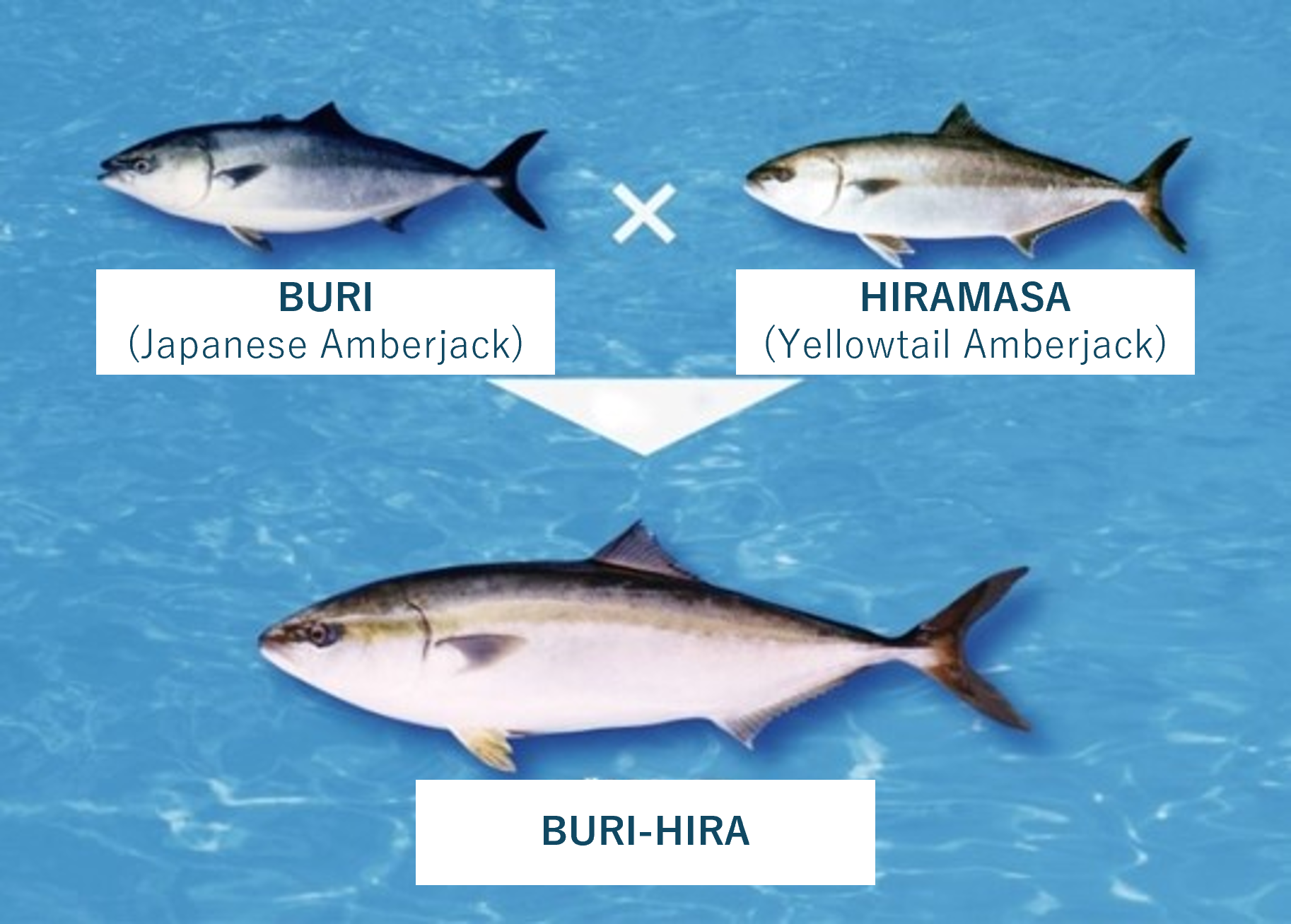
Buri-Hira’s Superior Character
Enhance preferable character both of Yellow Amberjack and Japanese Amberjack
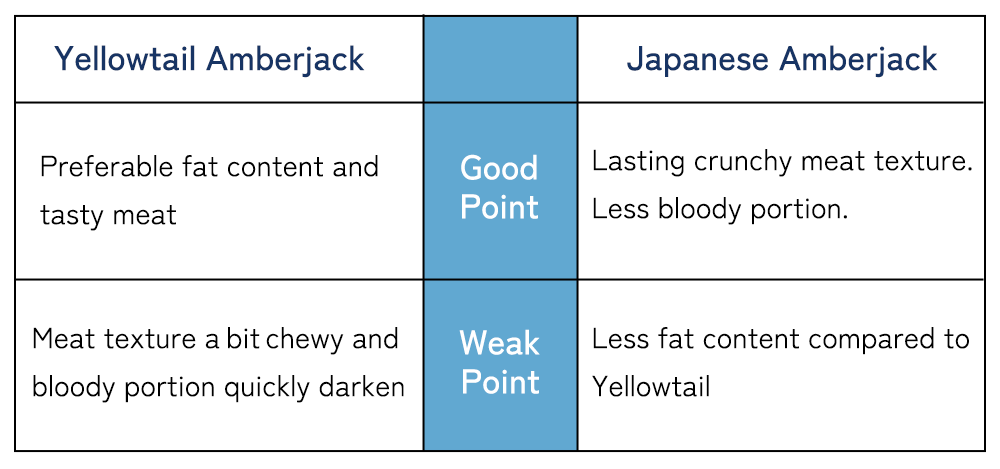

What’s “Acerola MADAI” ?
Acerola contains very high levels of vitamins and polyphenols and is known as a superfood with beauty and health benefits.
Adding it to aquaculture feed has the effect of greatly improving the meat quality of sea bream.
Acerola sea bream is fed with acerola as bait. It was created through joint study between Nichirei Foods, an acerola business, and Kinki University, a world-class center for aquaculture study.

Characteristics of Acerola MADAI
It contains more free amino acids and inosinic acid, which are the source of umami, than regular red sea bream, giving it a strong umami taste and a hint of sweetness.
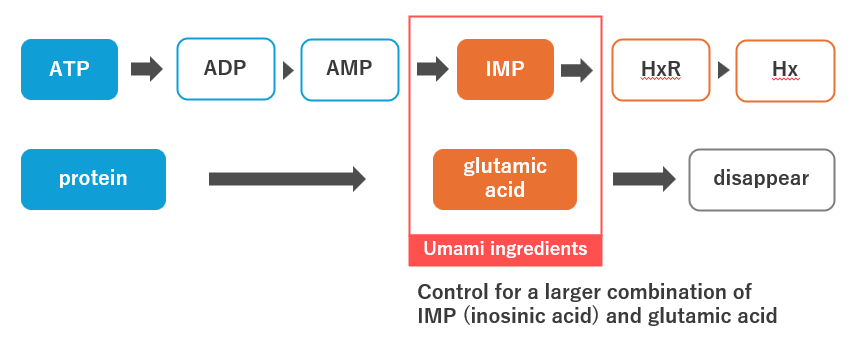
Inosinic acid + glutamic acid are the main “umami ingredients” of fish, and the combination of the two determines the “umami strength” of the fish.
ATP (adenosine triphosphate) is the source of energy used by living creatures for locomotion; remaining abundant in ATP slows oxidation, which is the cause of product deterioration. ATP then becomes IMP (inosinic acid), the umami component of fish, and accumulates in the muscles. IMP (inosinic acid) is then broken down into Hx(hypoxanthine), which causes bitterness.
Processing the fish so that there is plenty of ATP remaining is extremely important to make it a delicious and beautiful product.

Ikejime is a Japanese original technique that keeps the fish meat fresh by making the fish braindead. We use our proprietary technology to perform the strangling process. This results in reliable blood removal and at the same time leaves behind ATP, producing a high-quality product with strong umami and beautiful coloration.
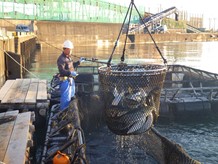
① Live fish are carefully scooped up.

②The scooped fish are anesthetized with cold water to weaken the ATP-degrading enzymes.

③The fish are immediately killed by an automatic fish clamping machine. The medulla oblongata and vena cava are cut.

④Immediately make a cut in the tail and nerve-clamp the fish with air.
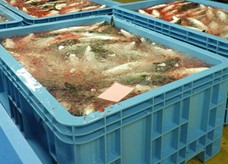
⑤Sterile cold seawater and ice are circulated to drain the blood and cool the fish quickly.
Copyright © 株式会社食縁 all rights reserved.
